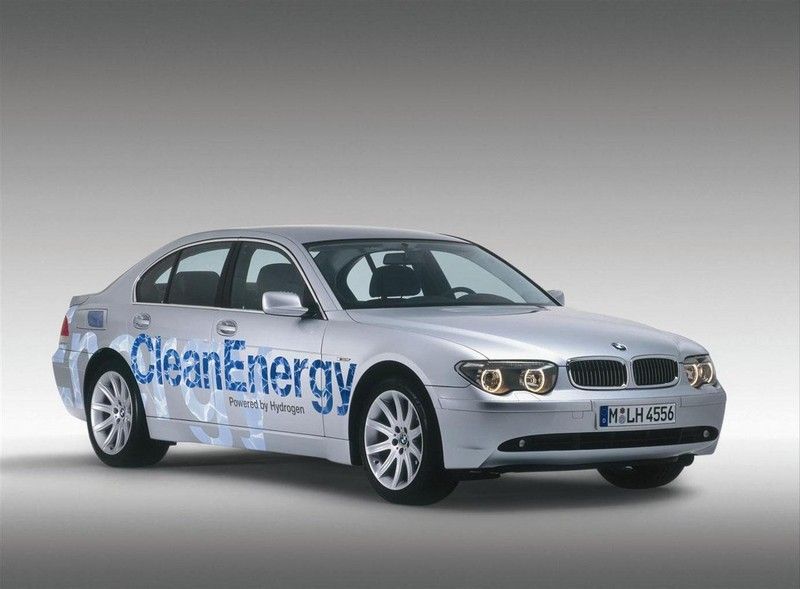The first Hydrogen-powered sedan}0}
In September 2004, BMW demonstrated its advanced state of development in hydrogen power by setting nine international speed records for hydrogen-driven vehicles with the BMW H2R research vehicle. This unique prototype is powered by a 6.0-liter V-12 engine that develops approximately 285 hp; among the records it set was 186.11 mph for the "flying-start" kilometer.
On a more down-to-earth level, BMW is developing a limited-production 7 Series model capable of running on hydrogen or gasoline. At the 2006 Hydrogen Expo U.S., held March 12-14 with the 17th NHA Annual Hydrogen Conference, at the Long Beach Convention Center in California, BMW's exhibit will feature an example of a bi-fueled internal combustion engine as well as an in-vehicle liquid hydrogen storage system.
In 2008 BMW will be the first car manufacturer that will be producing and selling hydorogen-powered cars. The first model will be the 760i, that will have the 6.0 V12 engine. Although capable of over 300km/h, it will limited to 250km/h like all other BMWs.
Clean energy}0}
Regeneratively-produced hydrogen is the only truly sustainable energy source; in this respect it differs fundamentally from fossil fuels. Moreover, its use in motor vehicles is free of carbon dioxide emissions. The two key elements of hydrogen-powered vehicles are the internal combustion engine and the hydrogen fuel storage tank.
When it comes to hydrogen power, BMW is committed to the internal combustion engine and its characteristic performance, responsiveness, and comfort. During the development of these engines, output levels of over 170kW/ 230hp have been achieved - and the full potential has not yet been reached. Its bi-fueled design means that the engine can be switched between hydrogen and gasoline, achieving the driving range of conventional vehicles while enabling the use of liquid hydrogen fuel where available.
Supercooled hydrogen in liquid state has the highest possible energy density in storing this fuel. To store liquid hydrogen at a constant temperature of -253C, the fuel tank is insulated using state-of-the-art technology: it is double-walled and based on the thermos flask principle. Between the two walls, there are approximately 70 layers of aluminum-coated synthetic foil under high vacuum. A 17-meter (50 foot) thick layer of polystyrene would be necessary to achieve the same insulation effect.

